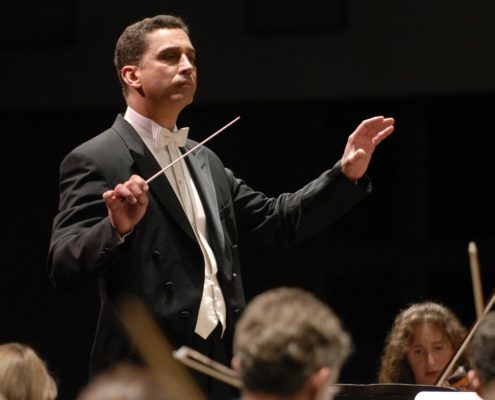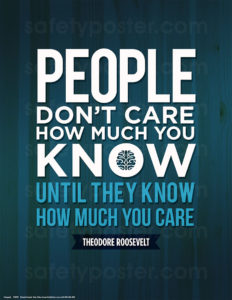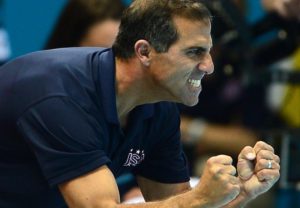It’s been a busy month for APA. September is traditionally the busiest month for me as I welcome back many young athletes into our programme, who have been away over the summer competing and on vacations.
This time of year is also a busy time of year for coach mentoring. I offer a formal coach mentoring scheme, (six month mentoring programme, which includes 20 hours of personal mentoring and your Level 2 Certificate in Strength & Conditioning coaching qualification).
But I also take on several interns every September for a 1 year contract- with interns committing to volunteering 10 hours of their coaching time on the programme. I meet with them every week to discuss the APA philosophy, the syllabuses they are following and give them feedback on how they are getting on.
It never fails to amaze me how much we are able improve their coaching skills in such a short time- I can tell you we are not talking about what they are coaching in this month. We are talking about how to coach- how to deliver a great session.
It’s often said, ”It’s not what you know, it’s who you know,” when trying to get into this industry. I would add, ”It’s not what you know it’s how you coach it.”
In the month of September the key focus has been on ‘How to Communicate effectively as a Coach.’
Create the Environment
In a previous blog on APA Philosophy I discuss how Bill Sweetenham asks potential try outs to his squads, how committed they are and what they are going to add to his current squad in terms of work ethic and so on.
There is no doubt that when you are in the good position of being able to select people you are more likely to be able to recruit people who have the right values and work ethic. In reality even if they do, we as humans still need to be in a nurturing environment which will help us get the best out of our talent level. This requires great coaching!
Your role is to create an environment which will help the athletes to get into the optimum performance state. Your job is to give them the info to help them perform but it is not your job to worry about their response being the one you are after. What I mean by this is- the athlete has to get themselves in the optimum performance state- if they can’t (because they can’t calm down or pump themselves up despite your feedback) then they don’t carry on in the session. Your job is to set the expectations and give them feedback on their efforts to meet them.
Managing the athletes in your coaching session is a lot like being the conductor of an orchestra.
This is one of the great skills of a coach- being able to recognise what state of mind their athletes are in and coach accordingly. I find that the best coaches know when to dial up the energy to get the athletes more fired up for the session and also when to use questions to challenge their athletes, and use discipline (if necessary) to calm them down and get them to focus on their current attitude. But for an inexperienced coach it can be really challenging to stand in front of their group of athletes and step into the role of the conductor. Today’s blog looks at how we use communication to create this optimum performance state.
Think about the process:
The graph above highlights the optimum performance state.
One of the difficulties of being an inexperienced or new coach is that it takes a little while to get to know your athletes.
It can be a bit like being the supply teacher at school. The athletes won’t have your trust or respect and will look to test your authority.
But the other issue with not knowing the athletes very well is that it makes it harder to know how each athlete typically responds in a coaching session and what sort of things they typically think about in a session- and how to get the best out of them. Do they need to be calmed down, or fired up? Will they respond better to more discipline or a more interactive approach?
In order to know what state of mind your athletes are in, you first need to know your athletes. The images below encapsulate for me what good coaching is all about. You need to take the time to get to know your athletes and this starts with good communication!! So there will be a lot of time spent both on and off the field to develop the relationship between coach and athlete so that there is a trust and respect built up which can only assist with the delivery of a coaching session.
Often times an athlete will come to practice with a number of potential distractors that could make it more difficult to get themselves in the right state of mind for practice (problems at home, work, school, relationships, other stressors such as the pressure of winning) so before going into more detail about the communication styles used in an actual session I should say that it really pays to spend time getting to know your athletes before the session, and speak to them throughout the week before an actual session.
Communication
Now assuming we recognise the need to get to know your athletes, we need to talk about the general aspects of communication we can use to deliver a great session.
This month I’ve been talking to my interns about two aspects of their communication.
- Their coaching style
- The structure of the session
In regard to 1 I have been discussing different communication styles- directive and interactive, and an overall ability to bring energy. We will cover these in more detail below but it is interesting to observe which styles the interns feel more comfortable adopting and which ones they need a bit of work on. Some are comfortable in being directive and firm (beginning of the session) but lack the feedback/questioning skills to engage with their athletes during and after completion of a drill. Others find it more difficult to break the awkward silences that come from having nothing to say during the drills and struggle to bring some energy and atmosphere to the session.
In regard to 2, every good session should have some common elements, within which different styles will be more effective. Overall the Outcome of every session is that I am looking for the coach to demonstrate that the athletes are:
-behaving/respectful
–learning (through getting technical corrections)
-having fun (through positive praise and energy from the coach and/or smart drill selection to bring out play and competition)
As a Process the session structure should have:
- Welcome/Warm-up
- Main Session:
- Set the Scene-explain/demo
- Observe Performance- cheer success
- Give Feedback- ask questions
- Wrap Up
WELCOME/WARM-UP:
The welcome/warm-up is a vital part of every session. Greet your athletes warmly and ask them how they are. Notice their body language when they walk towards you and start to get a feeling for what state of mind your athlete is in. By paying attention to the state of mind of your athletes you can then adjust the warm-up to get them where they need to be.
As stated above it is important to be aware of potential problems the athlete brings into the session that may make it harder to get in the optimum performance state. However, it should be understood that if the athlete has agreed to participate then they will be expected to meet the same expectations as all the other athletes.
Problems you will face:
Low energy- lazy/feel tired/sad
High energy- angry
Solutions??
>challenge them- how tired are you actually?
>shake up activity/listen to high energy music
>give them a time out to either calm down/breath or think about their poor attitude
Remember it is our thoughts that often prevent us from staying in our optimum performance zone. So get them to be aware of what they may be thinking about which may be unhelpful or a distraction. This links to the things I spoke about at the beginning- the better you get to know your athletes the easier it will be to get to the bottom of the issues.
SETTING THE SCENE:
This is a key part of the session. Establish your authority. It’s often the part that is poorly done with inexperienced coaches, especially when working with children. You need to show them who is in charge, what the rules are, what your expectations are and make sure they know the consequences for those who can’t meet the expectations.
Explain purpose of the session:
>Directive– tell them the objective of the session (what they are going to do)
>Motivational/Sell- tell them why it’s important- or ask them!
‘Do you think that concentration is important in tennis?’
-Sell- a new drill
-Motivate- not a new drill
Make clear what you’re expecting:
Again, be directive here and very clear what you are looking for.
>Behaviours– tell them how you are expecting them to behave. You want them to give 100%, show a good work ethic and try their best.
>Instructions– may include explanation/demo how they are going to do it- GIVE THE KEY TEACHING POINTS. Be passionate about what you are looking for. Show them how much it means to you to do things properly.
When coaching a point you must be directive, ‘you are now going to, rather than I’d like you to try……’
OBSERVE PERFORMANCE:
Outcome–
>How many points did they win? How did they perform?
>Are they doing what you’re expecting?
Process
MENTAL->>ATTITUDE/STATE
>Did they look confident?
>Did they focus/give 100%/compete?
>Were they breathing?
PHYSICAL->>MOVEMENT
>Did they have good perception?
>Good athletic base?
>Explosive first step?
>Good agility? etc
One of the things I have noticed about watching some of the interns coach is their initial reluctance to speak up while the drills are being performed. There is an awkward silence. It may because the coach is not confident in the correct execution of the exercise (so is reluctant to give information that may be incorrect in their eyes). It may be that the athletes are performing the exercises very well (so the coach doesn’t know what to say). I think there are times when you don’t need to say anything, but for the most part a few cues here and there to keep the athletes focused on the techniques you want are welcomed. Most importantly if they are doing what you want them to do then cheer success and vocally encourage more of the same!!!
You can’t beat the feeling of being praised and encouraged by your coach. Positive reinforcement trumps negative reinforcement (focusing on what they are not doing well) every time!!!
Remember to cheer every positive attempt that is a step towards success in execution of the outcome you want. Relate their performances back to the teaching points you referred to in your demo/explanation.
BE POSITIVE!!!!! BE ENERGETIC!!! BE ENTHUSIASTIC!!!
GIVE FEEDBACK:
But what if the the overall performance of the group is not up to your expectations- could be a lack of mental application (they are not focusing) or a physical (they are giving their best effort but they are not technically performing it correctly) you may decide to bring the whole group in to gain and give feedback.
If you observe that only one or two athletes are not performing up to your expectations you may direct your communication to them on a more individual basis, rather than stopping the whole group.
But as a general rule, after each drill, or at the end of a particular part of the session bring the athlete or squad in and ask for feedback, and also give yours.
Language you use:
Positive- focus on the things you want them to do rather than telling them what they aren’t doing
Depersonalised
In the present
Good questions to ask:
Ask questions BEFORE you give your view!
>’How did you think that went?’
>’What can you do to improve it next time?’
>’What were you focusing on?’
>’Give me a score out of 10 for your concentration.’
>’What makes you say that?’
>’What are you going to do to improve that score?’
>’What is stopping you training the way you want?’
>’So what do you need to focus on to train the way you want?’
>’Do you need any help with that?’
When questioning you can be interactive and ask, ‘how was that?’
Giving feedback:
Praise WITH coaching information.
Rather than just saying, ‘good, well done, I like it!’
Say, ‘what you did well was you moved to the ball early, well done!’
When sandwiching negative feedback, you may want to say, ‘and what I also noticed is that the elbow got a bit close to the body. Now to make it even better, try and keep your elbow out a bit more.’
SUMMARY:
Coaching is like being on stage as a performer. You are the conductor and you are conducting your orchestra. They will respond to your instructions and directions.
Coaches need to have different styles- a bit like the conductor who needs to use different styles to speed up and slow down the pace of the musicians.
I feel this can be reflected in different communication styles:
>Directive– use a firm tone of voice, clear, deep and authoritative. Can be loud at times to grab attention. Very important when getting instructions across. You are not making a request. It is a command.
>Interactive– use a calm, conversational tone- with a more regular pace. But show interest and curiosity. You can inflect your voice to show that you are asking them something rather than telling them.
>High energy– raise the pitch of your voice to demonstrate excitement- possibly speed it up too. Can be used during explanations to convey your passion for what you want to be done. Also use it to communicate praise and positivity during the athlete’s performance in the drills.
I hope you found this useful and it would be great to reflect yourself on which parts of your communication you feel you can improve. Good luck!!








